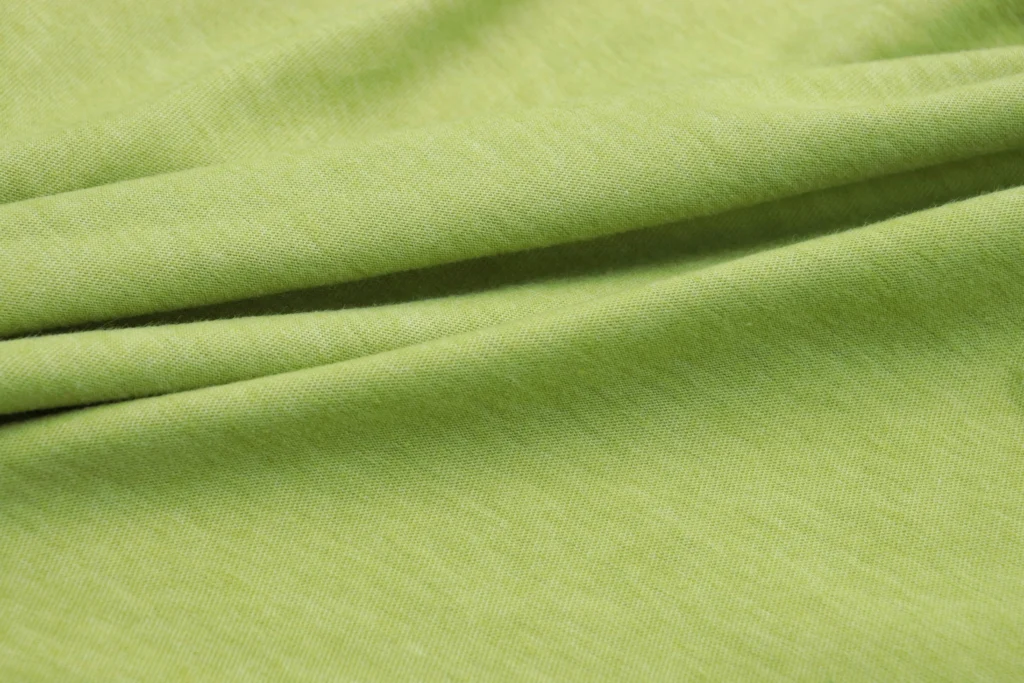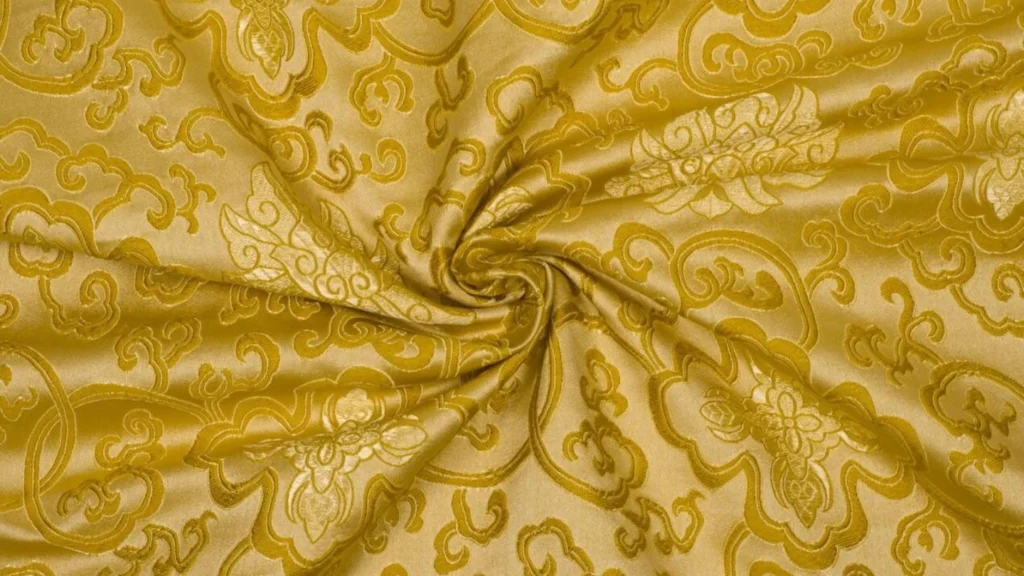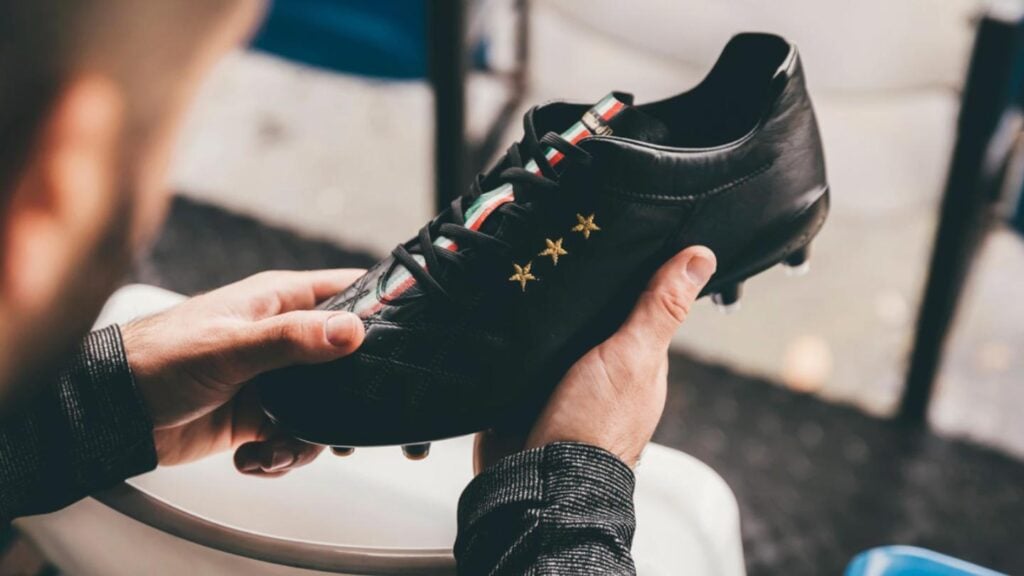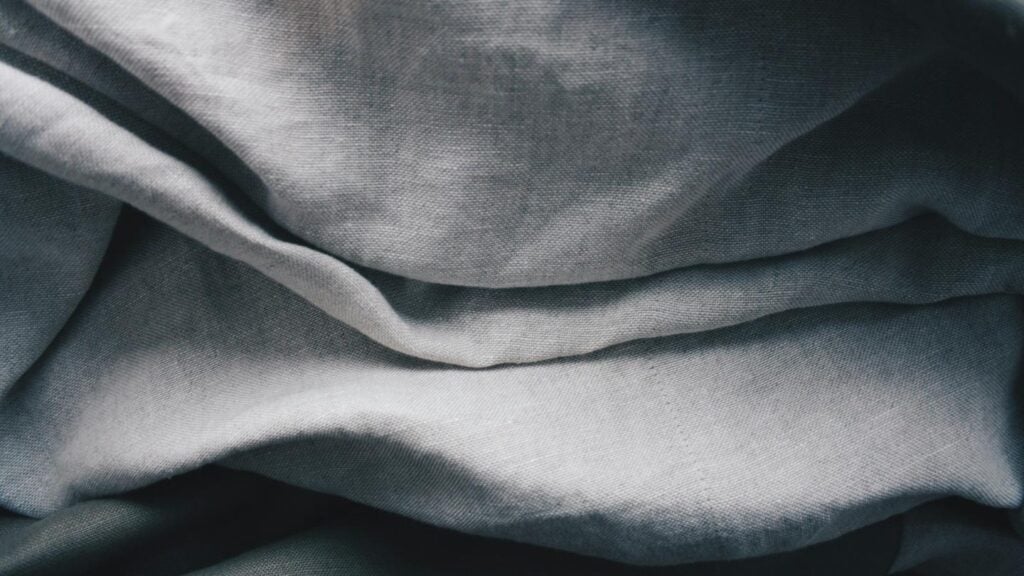2 – Charmeuse Fabric Composition
3 – Charmeuse Fabric vs Other Fabrics
4 – Charmeuse Fabric Is Manufactured
5 – Common Uses in Fashion
6 – Understanding the Environmental Impact of Charmeuse Fabric
7 – Exploring Price Points and Value for Money
8 – Conclusion
9 – FAQs
What is Charmeuse Fabric?
Charmeuse fabric is a luxurious, smooth, and shiny textile known for its elegant appearance and soft feel. Often confused with satin due to its similar sheen, charmeuse is unique for its lightweight and fluid drape, making it a popular choice for high-end fashion and evening wear. Unlike satin, which can be made from various fibers, charmeuse is specifically known for its satin-like finish created through the weaving process.
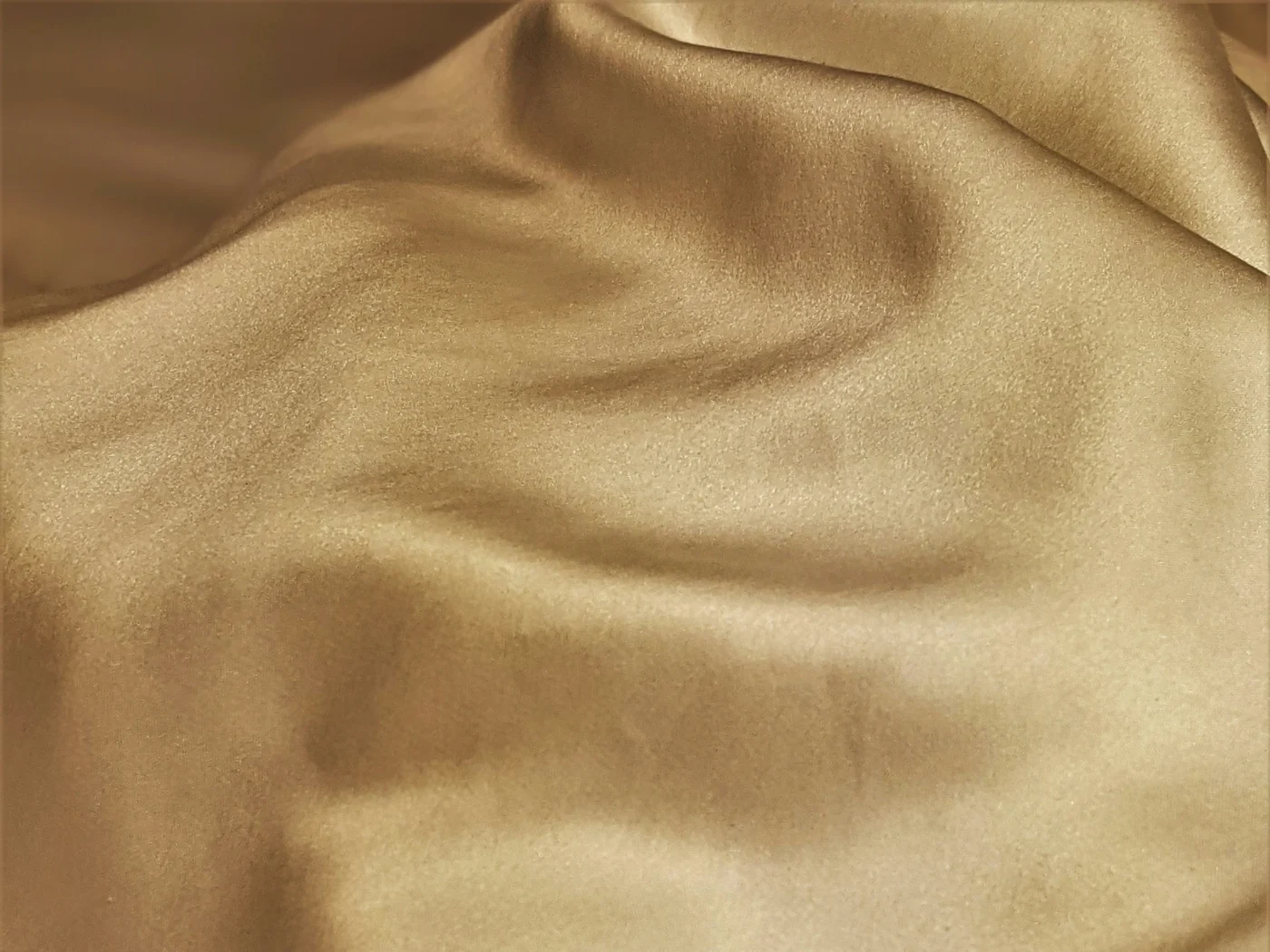
- Origin:
Charmeuse fabric originated in France and was traditionally made from silk. Its name comes from the French word “charme,” meaning “charm,” which reflects its luxurious and graceful qualities. Over time, charmeuse became associated with premium garments, including evening gowns, lingerie, and other formal attire. Today, charmeuse is produced using various fibers, including silk, polyester, and nylon, but its silky texture remains the defining characteristic. - Composition:
Charmeuse was originally crafted from 100% silk, which gives it a soft, glossy surface and a smooth texture. However, due to its high cost, modern versions of charmeuse are often made from synthetic fibers like polyester or nylon, which mimic the texture and appearance of silk at a lower price point. The composition of the fabric affects its feel, shine, and draping qualities, with silk charmeuse being the most luxurious, offering the softest touch and the most natural sheen. - Properties:
The most defining feature of charmeuse fabric is its shiny finish, which results from its smooth weave and the way the fibers reflect light. This gives charmeuse a sophisticated and lustrous appearance, often seen in evening wear, bridal gowns, and formal dresses. The fabric is lightweight and soft to the touch, making it comfortable for garments that require elegance and fluidity. Charmeuse is also known for its drapability, as it flows and moves beautifully, adding to its appeal for fashion design.
Charmeuse fabric remains a beloved choice for high-end fashion due to its beautiful texture, shine, and elegant drape. Whether made from silk or synthetic fibers, charmeuse continues to evoke a sense of luxury, making it an ideal fabric for formalwear and special occasion garments..
Charmeuse Fabric Composition
The composition of charmeuse fabric determines its texture, shine, and quality. Originally made from silk, charmeuse can now be crafted from different materials, each offering distinct characteristics:
- Silk Charmeuse:
The most luxurious option, silk charmeuse provides a soft, smooth texture and natural sheen, making it ideal for premium garments like evening gowns and wedding dresses. - Polyester Charmeuse:
A more affordable alternative, polyester charmeuse mimics silk’s shine and smooth texture but lacks its breathability and softness. It’s durable and easy to care for, often used in mass-market fashion. - Nylon Charmeuse:
Similar to polyester, nylon charmeuse is lightweight and durable, offering a shiny finish but with slightly less comfort and breathability than silk. - Blended Charmeuse:
Blends of silk and synthetic fibers combine the luxury of silk with the durability and affordability of synthetics, making charmeuse accessible at various price points.

The choice of material affects both the feel and appearance of charmeuse fabric, from the high-end luxury of silk to the more affordable options of polyester and nylon.
Charmeuse Fabric V.S Other Fabrics
Charmeuse is often compared to fabrics like satin, silk, and chiffon, but each has unique qualities:
- Charmeuse vs Satin:
- Satin refers to the weave, while charmeuse specifically uses silk or synthetics, offering a smoother, silkier feel. Charmeuse is lighter and drapes more fluidly than satin.
- Charmeuse vs Silk:
- Charmeuse can be made from silk or synthetic fibers. Silk charmeuse offers the best shine and softness but is more expensive, while synthetic versions mimic silk at a lower cost.
- Charmeuse vs Chiffon:
- Chiffon is sheer and airy, while charmeuse is smooth and shiny. Charmeuse offers a more luxurious, structured drape compared to chiffon’s lightweight, floaty look.
- Charmeuse vs Velvet:
- Velvet is plush and textured, while charmeuse has a smooth, glossy finish. Velvet is heavier and used for colder weather, while charmeuse is lighter and ideal for formal wear.

Charmeuse stands out for its soft texture, shine, and fluid drape, making it perfect for elegant, formal garments.
How Charmeuse Fabric Is Manufactured
Charmeuse fabric is created using a satin weave, which allows fibers to lie flat and reflect light, creating its signature glossy finish. Here’s a breakdown of the process:
- Weaving:
The satin weave gives charmeuse its smooth, shiny surface by reflecting light, contributing to its luxurious texture. - Material:
Traditionally made from silk, charmeuse is now often made from polyester, nylon, or acetate for a more affordable alternative, while maintaining a similar appearance. - Finishing:
After weaving, charmeuse undergoes finishing processes like heat setting and dyeing to enhance its shine and durability. - Weight and Quality:
Charmeuse comes in various weights, with lighter versions for flowing garments and heavier ones for more structured designs. The choice of fiber influences the overall quality, with silk charmeuse being the highest-end option.

The manufacturing process of charmeuse ensures a soft, shiny, and fluid fabric, ideal for formal wear and high-end fashion.
Produce your fashion collection with us
Common Uses in Fashion
Charmeuse fabric, known for its smooth texture and lustrous finish, is highly favored in the fashion industry for its luxurious look and feel. Its ability to drape beautifully and add a touch of elegance makes it suitable for a wide range of applications, particularly in formalwear. Here are some common uses of charmeuse in fashion:
- Evening Wear:
Charmeuse is a popular choice for evening gowns, cocktail dresses, and formal wear. Its soft, shiny finish and fluid drape give these garments a sophisticated and elegant appearance, perfect for special occasions. - Lingerie and Sleepwear:
The soft feel and sensual sheen of charmeuse make it ideal for lingerie, slips, and robes. Its smooth surface feels luxurious against the skin, providing both comfort and style in intimate wear. - Bridal Wear:
Charmeuse is frequently used in wedding dresses and bridal gowns, as its sheen creates a romantic, radiant effect. The fabric’s ability to drape elegantly makes it perfect for creating soft, flowing silhouettes in bridal designs. - Blouses and Tops:
Charmeuse fabric is also used in blouses and tops, especially for creating stylish, lightweight garments that shine with sophistication. Its lightweight nature and sheen make it ideal for creating eye-catching, elegant pieces for day or evening wear. - Accessories:
Charmeuse is used in scarves, shawls, headbands, and other accessories, where its shine and smoothness add a luxurious touch. The fabric’s ability to hold color vibrantly enhances its appeal in these smaller, statement pieces.

Charmeuse fabric is prized for its elegant, luxurious qualities and is often used in fashion for garments that require fluidity, shine, and a high-end appearance. Whether for evening wear, bridal attire, or accessories, charmeuse remains a top choice in creating beautiful, timeless fashion.
Understanding the Environmental Impact of Charmeuse Fabric
The environmental impact of charmeuse fabric varies depending on its composition and manufacturing process:
- Silk Charmeuse:
- Biodegradable and Natural: Silk is biodegradable but its production requires significant water and land use. Ethical concerns regarding silkworm farming also exist. Sustainable practices like organic silk farming are helping reduce its impact.
- Synthetic Charmeuse (Polyester, Nylon):
- Non-Biodegradable: Synthetic charmeuse is not biodegradable, contributing to long-term waste. Its production is energy-intensive, but recycled fibers, like recycled polyester, offer a more sustainable alternative.
- Water and Dyeing Processes:
- Charmeuse dyeing can use significant water and chemicals, potentially polluting water systems. Eco-friendly dyeing methods and waterless techniques are emerging to reduce this impact.
- Sustainability Alternatives:
- Sustainable options like recycled silk and organic charmeuse are being developed to reduce the fabric’s environmental footprint.
While charmeuse fabric offers luxurious qualities, the choice of materials and production methods greatly influences its environmental sustainability.
Exploring Price Points and Value for Money
The cost of charmeuse fabric varies based on material, manufacturing process, and intended use:
- Silk Charmeuse: The most expensive option due to the high cost of silk production and its luxurious feel. Ideal for high-end fashion and bridal wear, but requires careful maintenance.
- Synthetic Charmeuse (Polyester, Nylon): More affordable, offering a similar look to silk, but less breathable and luxurious. Suitable for mass-market fashion and everyday use.
- Manufacturing Process: Silk charmeuse is labor-intensive, raising costs, while synthetic charmeuse is more cost-effective and produced on a larger scale.
- Durability: Silk charmeuse is delicate, while synthetic charmeuse is more durable and easier to care for, offering better long-term value.

In conclusion, silk charmeuse offers luxury, while synthetic charmeuse provides an affordable, durable alternative, with the best choice depending on your budget and needs.
Conclusion
Charmeuse fabric is known for its luxurious feel, smooth texture, and shiny finish, making it perfect for evening wear, bridal gowns, and high-end fashion. While silk charmeuse offers the finest quality and softness, it comes at a higher price and requires delicate care. Synthetic charmeuse is a more affordable, durable alternative that mimics the look of silk with easier maintenance.
The environmental impact of charmeuse varies, with silk being more eco-friendly, though sustainable alternatives like organic silk and recycled fibers are emerging.
In conclusion, charmeuse is a timeless fabric, offering elegance and versatility, whether you choose silk for luxury or synthetic options for practicality and cost-effectiveness.
FAQs
- What is charmeuse fabric made of?
Charmeuse can be made from silk, polyester, nylon, or acetate, with silk being the most luxurious option and synthetic fibers offering more affordable alternatives. - How do I care for charmeuse fabric?
Silk charmeuse should be dry cleaned to maintain its sheen and texture, while synthetic charmeuse can often be machine washed on a gentle cycle. Always check the care label for specific instructions. - What’s the difference between charmeuse and satin?
Charmeuse refers to a fabric made with a satin weave using silk or synthetics, while satin is a type of weave that can be made from various fibers, including silk, polyester, and acetate. Charmeuse tends to be lighter and more fluid. - Is charmeuse fabric expensive?
Silk charmeuse is more expensive due to the cost of silk production, while synthetic charmeuse is a more budget-friendly option that mimics the look of silk. - Can charmeuse be used for casual wear?
While traditionally used for formalwear like gowns and lingerie, charmeuse can also be used in casual blouses or tops for a chic, glossy appearance. - Is charmeuse fabric durable?
Silk charmeuse is delicate and requires careful handling, while synthetic charmeuse is more durable and resistant to wear and wrinkles, making it more practical for everyday use. - What are the common uses of charmeuse fabric?
Charmeuse is popular in evening wear, bridal gowns, lingerie, blouses, and accessories, thanks to its luxurious look and soft, flowing drape. - How does charmeuse compare to chiffon?
Chiffon is lighter, sheer, and more airy, while charmeuse is smoother, heavier, and more lustrous, making it better for structured garments like evening gowns. - Can charmeuse be dyed?
Yes, charmeuse fabric, particularly when made from silk, dyes beautifully, providing rich, vibrant colors that enhance its glossy finish. - Is charmeuse eco-friendly?
Silk charmeuse is a natural, biodegradable fabric, but its production can be resource-intensive. Synthetic charmeuse has a higher environmental impact, but eco-friendly options, like organic silk and recycled fibers, are available.



